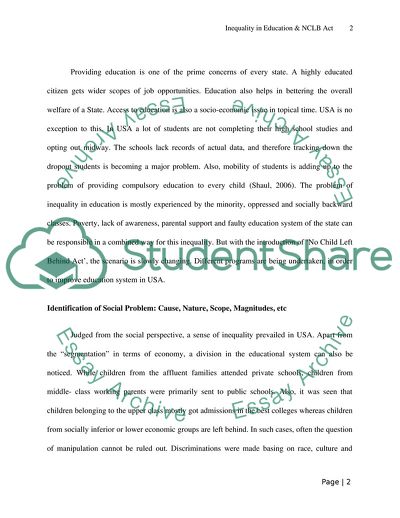Cite this document
(Sociology: Inequality in Education & NCLB Act Essay Example | Topics and Well Written Essays - 2250 words - 1, n.d.)
Sociology: Inequality in Education & NCLB Act Essay Example | Topics and Well Written Essays - 2250 words - 1. https://studentshare.org/sociology/1800794-social-problem-and-social-policy
Sociology: Inequality in Education & NCLB Act Essay Example | Topics and Well Written Essays - 2250 words - 1. https://studentshare.org/sociology/1800794-social-problem-and-social-policy
(Sociology: Inequality in Education & NCLB Act Essay Example | Topics and Well Written Essays - 2250 Words - 1)
Sociology: Inequality in Education & NCLB Act Essay Example | Topics and Well Written Essays - 2250 Words - 1. https://studentshare.org/sociology/1800794-social-problem-and-social-policy.
Sociology: Inequality in Education & NCLB Act Essay Example | Topics and Well Written Essays - 2250 Words - 1. https://studentshare.org/sociology/1800794-social-problem-and-social-policy.
“Sociology: Inequality in Education & NCLB Act Essay Example | Topics and Well Written Essays - 2250 Words - 1”. https://studentshare.org/sociology/1800794-social-problem-and-social-policy.


